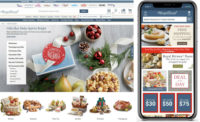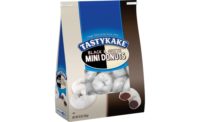
‘Tis the Season ... for Shopping
Category Climate
Confectionery is more seasonally savvy lately, thanks
in part to better/earlier visibility at retail, as well as maintained
merchandising strength in all the major candy holidays —
Valentine’s Day, Easter, Halloween and Christmas. The numbers clearly
prove it: 2006 seasonal sales showed growth in all four holiday segments
for the first time in more than five years, according to the National
Confectioners Association (NCA). Now, the 2007 holiday candy results are
in, and the growth is once again positive.
Just how candy-happy were the holidays last year?
Looking at dollar sales figures compiled by NCA, based on input from
Information Resources, Inc. (IRI), NCA/CMA Monthly Shipment Reports and the
U.S. Department of Commerce, Valentine’s Day candy sales for 2007
totaled $1.36 billion, showing a whopping growth of nearly 7%; Easter candy
sales for 2007 totaled nearly $2 billion, displaying growth of 5.5%;
Halloween candy sales for 2007 totaled $2.2 billion, for a growth of 2.6%;
and Christmas candy sales for 2007 rang in at over $1.4 billion, showing
the most modest sales gains (but still better than the most modest gain for
the previous year) of 2.2%.
Product Innovation
The greatest innovations in category introductions are
not new to candy, but they’re new to seasonal confections. Premium
and portion-controlled stock-keeping-units (SKUs) are the two most popular
lately; sometimes they’re even offered together in the same item. The
“newness” is that seasonal candy is becoming more like everyday
candy, mimicking everyday diet and indulgence trends to capture more
growth. The market is learning that consumers will often buy more of the
same candy they love when it’s packaged for a season or holiday.
Retailing/Merchandising
This year, the savviest stores put up a small portion
of Valentine’s Day candy SKUs the week of Christmas, when traffic was
high, letting customers know there would be a seasonal reason to come back
the next week. What’s more, it provided new year impulse candy sales
for customers returning gifts the week after Christmas. It’s no
longer a laughing matter to see seasonal candy put out early. Many
customers now say it puts them in a good mood.
Seasonal candy comes complete with seasonally
appropriate colors and mood-enhancers, so it doesn’t take much effort
for retailers today to build words (shelf talkers, counter cards) and a
theme that will have shoppers adding on sales. Cross-merchandising
opportunities really abound now, with premium and portion-controlled candy
that’s clearly targeted at adults. These shoppers may go to the club
stores for bags of Halloween candy for trick-or-treat, but they will be
tantalized by seasonal candy outposts just for them at the deli or
checkout, near produce or atop a bakery display. This has the ability to
capture impulse candy sales from adults like never before.
Outlook
For 2008, NCA predicts an overall growth of 2.1%,
expecting all major holidays to grow, with the exception of Easter, which
came early this year. Historically, this has been an indicator of a sales
decrease, but there simply weren’t enough days for consumers to buy
Easter candy as in 2007. However, marketers are drumming up ways to make up
for spring.
Estimated U.S. Retail Market Size
$6.6 billion*
Kids’ Novelty Non-Chocolate Candy*
*Derived from sales of the four major candy holidays:
Valentine’s Day, Easter, Halloween and Christmas
Source: National Confectioners Association (NCA),
based on input from Information Resources, Inc. (IRI), NCA/CMA Monthly
Shipment Reports and the U.S. Department of Commerce


